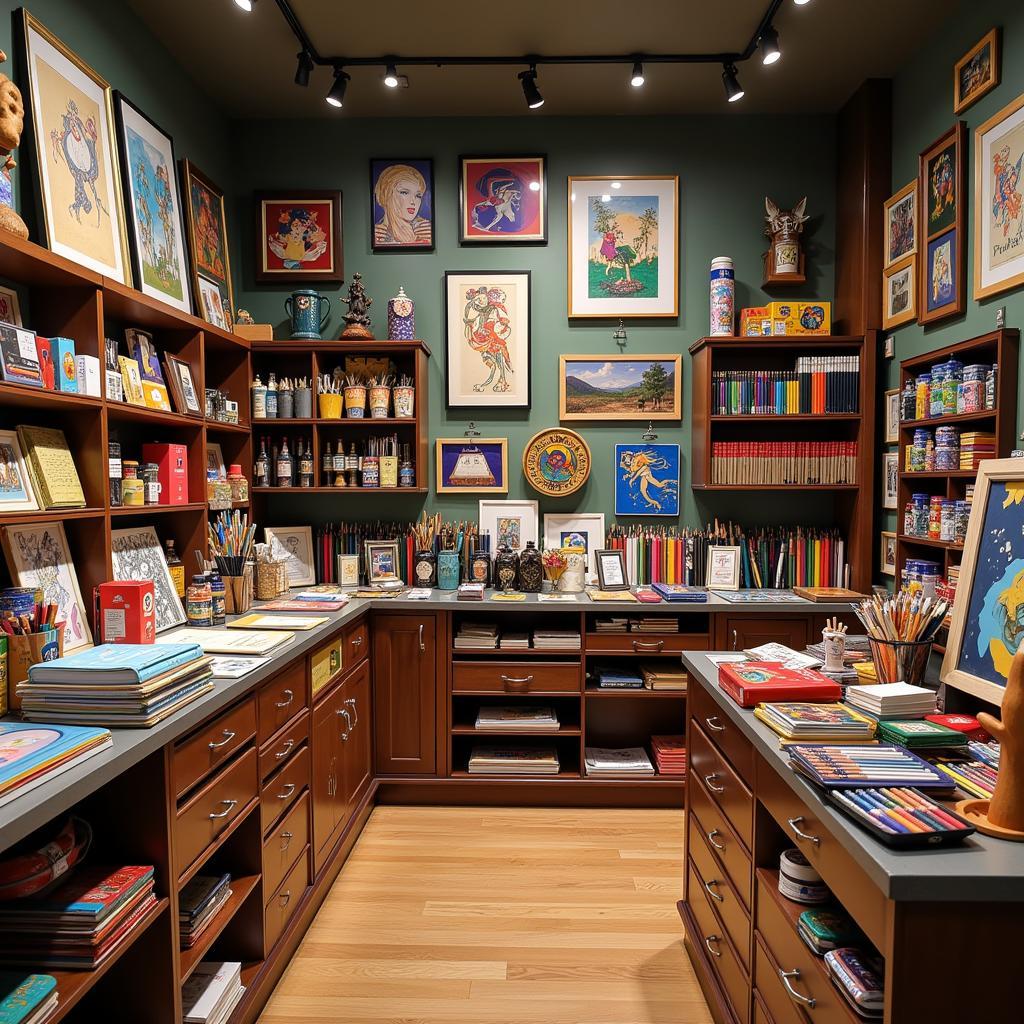Discovering the World of Cloth Doll Art
Cloth Doll Art is an enchanting realm where creativity blossoms through needle and thread. More than just playthings, these handcrafted treasures embody artistry, emotion, and often, a touch of nostalgia. From whimsical figures to intricate character dolls, the world of cloth doll art invites you to explore endless possibilities of textile manipulation and storytelling.
The Allure of Fabric and Thread
What is it about cloth art dolls that captivates both creators and collectors? Perhaps it’s the tactile nature of fabric, the comforting softness that beckons touch. Or maybe it’s the sheer versatility of the medium, allowing artists to craft everything from simple figures to elaborately costumed characters.
Cloth doll art transcends cultural boundaries, with traditions like Japanese kimekomi dolls and American rag dolls showcasing the diverse approaches to this art form. Whether crafted for play, decoration, or as a means of artistic expression, cloth dolls hold a unique charm that continues to captivate imaginations worldwide.
Essential Tools and Materials for Beginners
Ready to embark on your own cloth doll making journey? Starting with basic materials and gradually expanding your toolkit will set you up for success. Here’s a list to get you started:
- Fabric: Cotton and felt are excellent choices for beginners due to their ease of use.
- Stuffing: Choose from fiberfill, wool roving, or even repurposed fabric scraps for stuffing your dolls.
- Needles and Thread: A variety of hand-sewing needles in different sizes will be necessary. Choose threads that complement or contrast your fabric choices.
- Scissors: Sharp fabric scissors are crucial for precise cutting.
- Embroidery Floss: Add details and personality to your dolls with colorful embroidery floss.
Don’t be afraid to experiment with different materials and tools as you gain experience. Part of the joy of cloth doll art lies in discovering new techniques and developing your unique style.
Bringing Your Creations to Life: Basic Techniques
Creating a cloth doll involves a series of steps, each contributing to the final personality and charm of your creation. Let’s delve into some fundamental techniques:
- Pattern Making: Begin by sketching your doll’s design on paper. Once you’re satisfied, create a pattern by tracing the outline of each body part onto separate pieces of paper.
- Cutting Fabric: Pin the pattern pieces to your chosen fabric and carefully cut them out, leaving a small seam allowance.
- Sewing and Stuffing: Sew the fabric pieces together, leaving an opening for stuffing. Fill the doll with your chosen stuffing material, adjusting the firmness to your preference.
- Facial Features: Embroider eyes, a nose, and a mouth to bring your doll’s face to life. Alternatively, you can use buttons, beads, or fabric paint for these details.
- Hair and Clothing: Get creative with yarn, embroidery floss, or even fabric scraps to fashion hair for your doll. Design and sew miniature clothing items to add personality and style.
Remember, practice makes perfect. Don’t be discouraged if your first attempts aren’t flawless. Each stitch brings you closer to mastering the art of cloth doll making.
Exploring Different Styles of Cloth Dolls
The world of cloth doll art encompasses a vast spectrum of styles, each with its unique characteristics and appeal.
- Primitive Dolls: Often characterized by simple shapes, rustic textures, and a minimalist aesthetic, primitive dolls evoke a sense of timeless charm and folklore.
- Waldorf Dolls: Inspired by the Waldorf education philosophy, these dolls typically feature minimal facial features, encouraging imaginative play and open-ended storytelling.
- Art Dolls: As the name suggests, art dolls prioritize artistic expression, often incorporating mixed media, unconventional materials, and intricate details.
Beyond these broad categories lies a world of niche styles, from whimsical fairies to art hopi kachina drawings brought to life in fabric and thread. Exploring different styles can spark new ideas and inspire you to develop your own signature approach.
Finding Inspiration and Resources
The internet offers a treasure trove of inspiration and guidance for cloth doll enthusiasts. Online communities, blogs, and social media platforms provide platforms to connect with fellow artists, share creations, and learn new techniques.
- Pinterest: Discover a plethora of cloth doll patterns, tutorials, and finished projects to spark your creativity.
- Etsy: Explore handmade cloth dolls from artists around the world, seeking inspiration from diverse styles and techniques.
- YouTube: Find video tutorials covering various aspects of cloth doll making, from basic sewing to advanced sculpting techniques.
Don’t underestimate the value of books dedicated to the craft. Many comprehensive guides delve into the intricacies of cloth doll art, offering step-by-step instructions and expert tips.
Conclusion
Cloth doll art offers a fulfilling creative outlet, allowing you to transform simple materials into cherished keepsakes. Whether you’re drawn to the whimsical charm of rag dolls or the intricate details of art dolls, the journey of creating something with your own hands is both rewarding and therapeutic. So, gather your materials, thread your needle, and embark on an exciting adventure into the captivating world of cloth doll art.
FAQs about Cloth Doll Art
1. What type of fabric is best for making cloth dolls?
Cotton and felt are excellent choices for beginners due to their ease of use and wide availability. As you gain experience, you can experiment with other fabrics like linen, silk, or even faux fur.
2. Can I use a sewing machine to make cloth dolls?
While some doll makers prefer the control of hand sewing, a sewing machine can certainly be used for certain parts, especially when working with larger dolls or multiple layers of fabric.
3. Where can I find patterns for cloth dolls?
Numerous online resources like Pinterest, Etsy, and dedicated craft websites offer a wide array of free and paid cloth doll patterns to suit various skill levels.
4. What is the best way to stuff a cloth doll?
Fiberfill is a popular choice for stuffing cloth dolls as it’s soft, lightweight, and readily available. Other options include wool roving, repurposed fabric scraps, and rice for added weight.
5. How do I care for a cloth doll?
Gently spot-cleaning with a damp cloth is usually sufficient for minor stains. For more thorough cleaning, check if the doll is machine washable, otherwise hand washing with mild detergent is recommended.
6. Can I sell the cloth dolls I make?
Absolutely! Many talented artisans sell their handmade cloth dolls online through platforms like Etsy or Shopify, or at craft fairs and local markets.
7. What other crafts pair well with cloth doll making?
Embroidery, knitting, crocheting, and beading are just a few crafts that complement cloth doll making beautifully, allowing you to create intricate details and unique embellishments.
Need Help? Contact Us!
For any questions or support regarding cloth doll art or other art forms, please don’t hesitate to contact us.
Phone: 02462573573
Email: danteum@gmail.com
Address: Savico Megamall, 7-9 Đ. Nguyễn Văn Linh, Gia Thụy, Long Biên, Hà Nội 10000, Việt Nam
Our dedicated customer support team is available 24/7 to assist you.
Explore further and unleash your creativity with our other Online Art workshops! Discover the joy of creating pixel art for sale or explore affordable art options with our guide to art for the cash poor. For those seeking unique accessories, delve into the world of affordable art deco rings and express your personal style.


